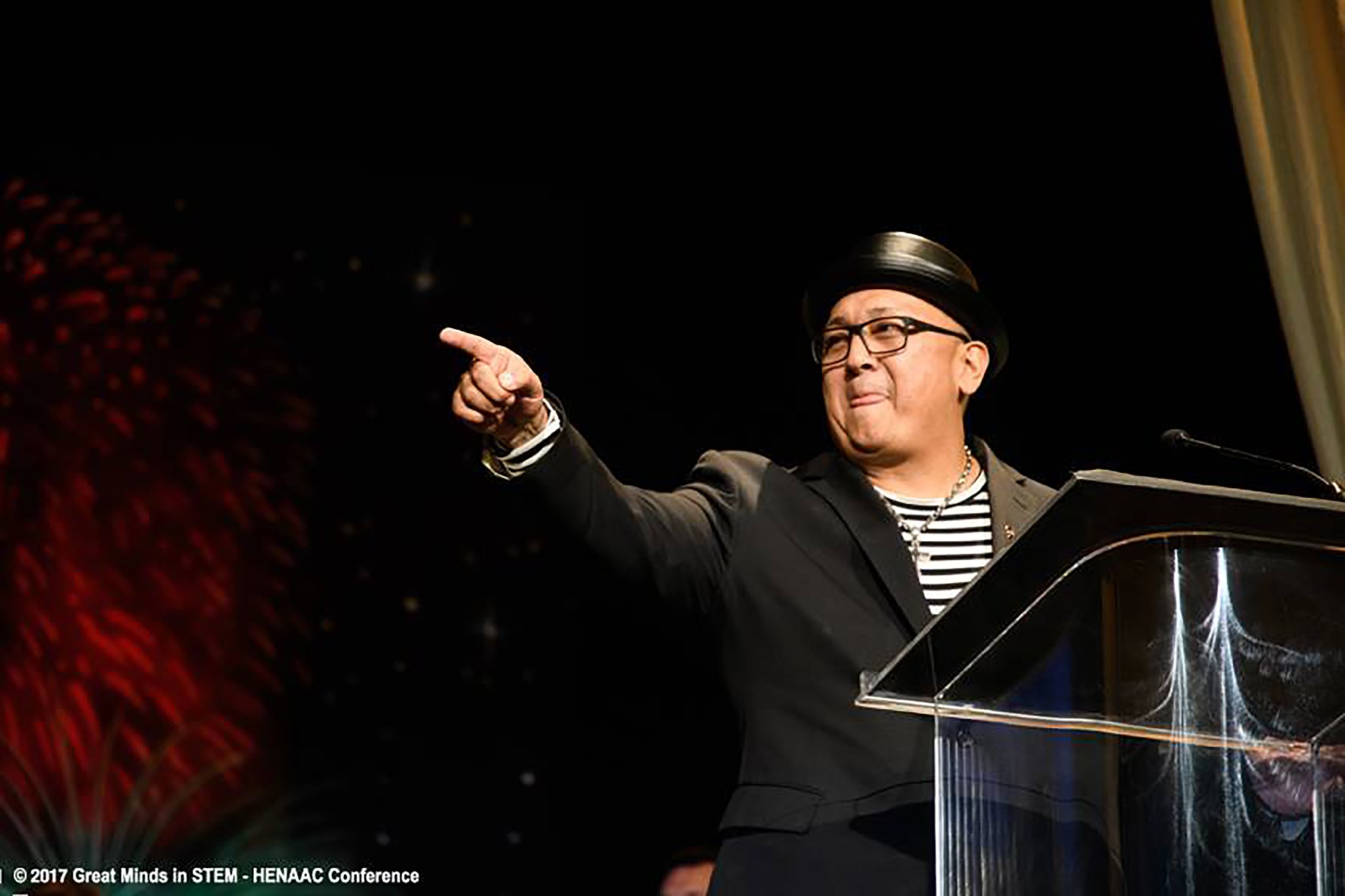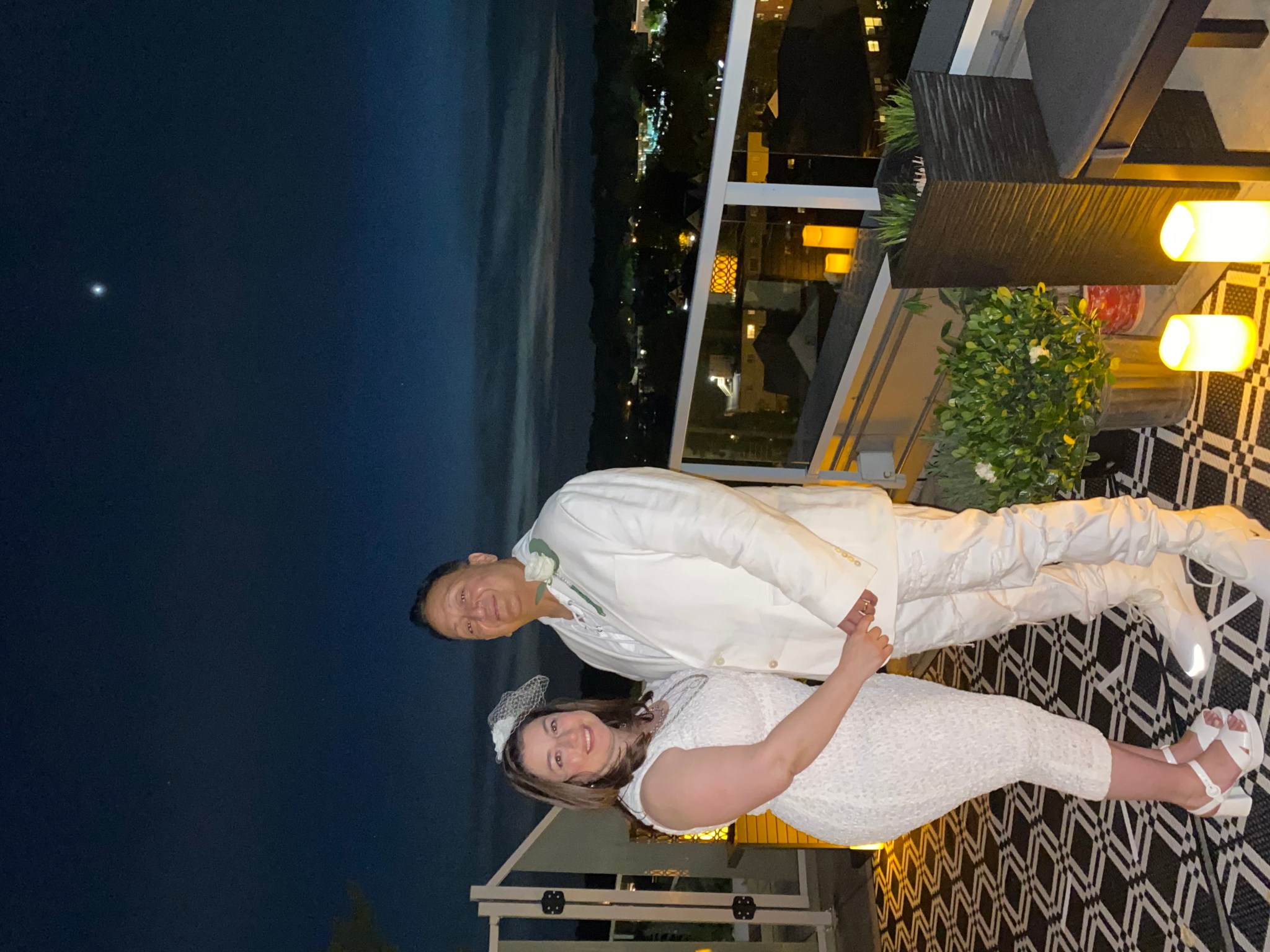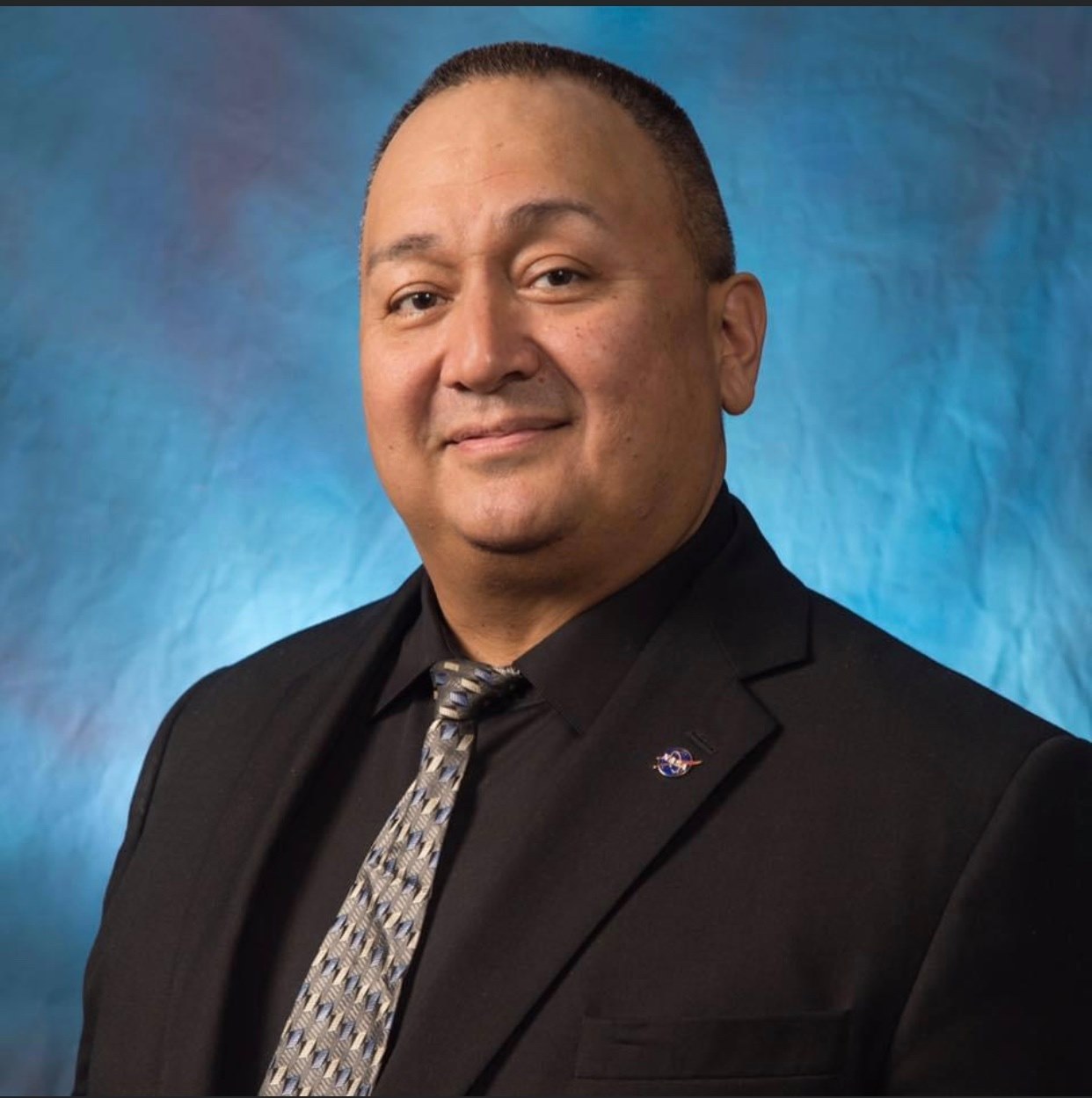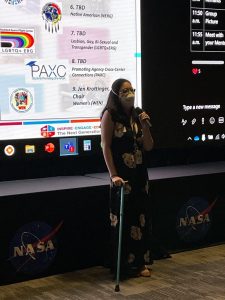Name: Edward Gonzales
Title: Lead for Diversity, Equity and Inclusion for the Heliophysics Division
Organization: Heliophysics Division, Science Directorate
What do you do and what is most interesting about your role here at Goddard? How do you help support Goddard’s mission?
As the lead for Diversity, Equity and Inclusion (DE&I) for the Heliophysics Division, I am trying to support how our division hires and treats each other. I study surveys and address any concerns, gaps or trends so that I can improve diversity, equity, and, most importantly, inclusion for our division. I am also meeting with other DE&I leads. It is so refreshing to hear the passion from each of them.
What was your first job with benefits? What is your educational background?
In 1986, in Los Angeles, I started in the mailroom of one of the largest law firms in the world. I worked my way up to senior staff as manager of the support groups. I worked full time at the law firm and went to school at night to try and earn a Bachelor’s in business management from the University of Phoenix. My boss and first mentor was the Honorable Warren Christopher, who was the managing partner at the firm and was also the secretary of state in the Clinton administration. I worked there for 14 years.
What inspired you to work for NASA?
When I was five, seeing Apollo 13 convinced me that I wanted to work for NASA. I had to put my dream on hold, but I never gave up. In 2001, I finally had the qualifications to get a job with NASA.
What was your first position at NASA?
In 2001, I took a job at NASA’s Jet Propulsion Laboratory in Southern California as a business administrator. After three years, I switched to the education office to do outreach and work with underserved and underrepresented communities. I stayed until 2018.
During this time, I did a one-year detail at NASA Headquarters in Washington to work in the Office of Education and then the Science Mission Directorate. In 2014, I also did a fellowship with NASA’s Minority Research Education Program.
Why did you come to Goddard?
In early 2018, I came to Goddard’s Heliophysics Division as the lead for STEM engagement for underserved and underrepresented communities. My wife, then fiancée, also worked with NASA Headquarters through her company, and we wanted to be together.
In April 2020, we moved our wedding to a virtual wedding on our terrace in Chevy Chase. We had almost 1,000 Zoom guests. Everyone dressed up and even danced in their living rooms.
What are your goals as lead for DE&I for the Heliophysics Division?
My goal is to make people feel more appreciated, equal and safer. That they have allies. That the Goddard community understands and values them. I also want to create a pipeline for diverse populations to obtain internships and a career path at Goddard.
It is important to tell Goddard’s story. When I am at a diversity conference and ask someone to apply to Goddard, I talk about the various affinity groups we have here. I let them know that leadership strongly supports DE&I and our community welcomes DE&I.
How does Goddard foster inclusion?
We make sure that the affinity groups, and our committees, are active and supported by management. In fact, inclusivity is now included in everyone’s performance appraisal. DE&I is a way of life at Goddard and all of NASA.
Why is DE&I so important to you?
I am part Native American and part Latinx. With my heritage, I have been on the receiving end of racism.
My father is Mescalero Apache and my mother is Mexican, which we refer to as Latinx rather than Latin. My father is from New Mexico, and his father was born on a reservation in New Mexico. Growing up, my father tried to hide his Native American heritage. But you can’t. When you see a picture of my father or of me, you clearly see the Native American in us. He wanted us to grow up Americanized. We did not learn any of the cultural aspects of our heritage. It was a different time and he was protecting us.
I have a dark complexion. Years ago, growing up, when driving in Los Angeles, the police would pull me over about four times a week. Racial profiling was a normal occurrence for me.
When I came to the East Coast in 2018, two things happened to me. My wife and I went to an event at the Australian embassy. When we arrived, the guard at the metal detector told me I was late and at the wrong door. He assumed I was part of catering. Soon after, my wife and I went to a restaurant. Once we arrived, the bartender told us they were closed even though people were there eating and drinking. We asked to get the food as take out and he sent us to the back, which was the deserted employee entrance.
As an adult, I understand why my father did what he did to protect us. I recently started asking family members many questions. I also am using various internet products to explore my ancestry.
What Goddard affinity groups are you a member of and what do you do?
I am on the Natives At NASA community, which is open to all NASA Native Americans and anyone else who wants to join. We meet quarterly to discuss presentations and workshops to indigenous K-12 and colleges. Our focus is to give them hope and ask them to consider STEM education and a job in aerospace. We also do a lot of mentoring.
In addition, I am on Goddard’s Hispanic Advisory Committee for Employees. We meet monthly to organize various events such as speakers. We also support Spanish and Latinx organizations such as the Society of Spanish Professional Engineers, which works with Latinx and Hispanic people, and also Great Minds in Stem. I am also a part of the LGBTQ group and the African American group at Goddard.
What are some challenges in hiring Native Americans?
Native Americans are sometimes very reluctant to leave their reservation because in their culture they are tied to the land. Native Americans are also very respectful of their elders, if you see it, you honor it.
To illustrate, I was recently at a career fair. I helped my colleague understand that rather than ask a young Native American to permanently leave their reservation, it is more helpful to suggest that they temporarily leave to learn skills to bring back to their reservation. I also helped my college appreciate that their elders often guide young Native Americans so their elders are sometimes with them at important events like career fairs. If an elder is present, you address the elder.
Who is your D&I hero?
Dan Krieger and Veronica Hill, Goddard’s Diversity and Inclusion program managers. They are both such champions for so many different groups, in particular Latinx and Hispanic. One of the beautiful things Dan has taught me is to be kind and respectful to everybody. He does everything with humor and grace. And I am in awe of Veronica, she is just amazing at all she does.
As a mentor, what advice do you give?
I have four keys to success. First, nurture your network and relationships. Second, honor your last name, your family name. You may not remember my name, but it is my hope that you will remember how I made you feel important and respected. Third, keep your skill set up to date. Fourth, remember your grind and your hustle. What are you willing to do today to accomplish your goals and dreams of tomorrow?
I start every presentation with this: close your eyes and ask yourself two questions. If you could be anything at all, what would that look like, sound like? Engage all your senses. Second, what did you do today to make tomorrow happen?
Is there something surprising about your hobbies outside of work that people do not generally know?
I am a sneakerhead. I collect sneakers. I have about 150 in a sneaker room. Most sneakerheads buy a shoe, put them in a box and put them away. I wear them and toss out the box, although I clean them after each use. I am not selling them, I just enjoy them. Most of them are limited edition. One of my favorite pairs are the first Michael Jordan sneakers, which are worth a lot. Recently I bought a pair called Ben & Jerrys, which appreciated quite a bit. A lot of musical artists collaborate with Nike or Air Jordan to make special, limited edition sneakers.
My wife loves shoes. She did not have any sneakers before she met me, but she now has at least 20 pairs in addition to all her other shoes. We share the sneaker room.
What is your “six-word memoir”? A six-word memoir describes something in just six words.
“I dreamt, I planned, I succeeded.”
Conversations With Goddard is a collection of question and answer profiles highlighting the breadth and depth of NASA’s Goddard Space Flight Center’s talented and diverse workforce. The Conversations have been published twice a month since May 2011 and are archived on the NASA Goddard homepage under the People tab.
Banner info (from left to right):
Mary Golda Ross — First known Native American female mathematician and engineer. She wrote a number of professional and theoretical works and was one of the authors of the NASA Planetary Flight Handbook Vol. III, about space travel to Mars and Venus.
Ely S. Parker — United States Army officer, engineer, and tribal diplomat in the 1800s.
Deb Haaland — First Native American United States Secretary of the Interior.
John Herrington — John Bennett Herrington is a retired United States Naval Aviator, engineer and former NASA astronaut. He flew on the Space Shuttle Endeavour’s STS-113 mission and became the first Native American in space.
Conversations With Goddard is a collection of question and answer profiles highlighting the breadth and depth of NASA’s Goddard Space Flight Center’s talented and diverse workforce. The Conversations have been published twice a month since May 2011 and are archived on the NASA Goddard homepage under the People tab.
By Elizabeth M. Jarrell
NASA’s Goddard Space Flight Center, Greenbelt, Md.

































